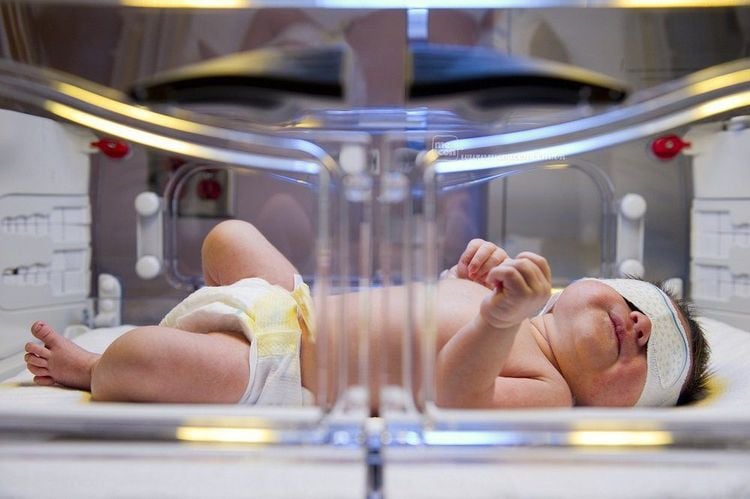This is an automatically translated article.
Protein-energy malnutrition is a rare form of malnutrition. However, the consequences of this pathology are very serious. It can affect children's health and growth in the long run, even their ability to study and work. Therefore, the prevention of malnutrition in general and protein-energy malnutrition in particular is very important.
1. What is protein-energy malnutrition?
Protein-energy malnutrition has the English name Protein-Energy Malnutrition: PEM. This is a severe undernutrition resulting from a relative or absolute deficiency of energy and protein. As many studies have shown, protein-energy malnutrition occurs due to the lack of many other micronutrients.
The disease can occur in any population but is most common in young children and women of childbearing age. In Vietnam in recent years, this type of malnutrition is very rare, mainly mild and moderate malnutrition.
Malnutrition seriously affects the physical and mental development of children. Therefore, improving nutrition and preventing malnutrition in children are of great interest to the community.
MORE: Types of malnutrition due to protein-energy deficiency in children

Suy dinh dưỡng protein năng lượng xảy ra ở mọi lứa tuổi
2. Manifestations of protein-energy malnutrition
Weight loss is the most obvious manifestation of protein-energy malnutrition. In addition, severe malnutrition will show a decrease in the amount of fat stored in the face, calves, and musculoskeletal mass (interstitial and temporal muscles). Patients with protein malnutrition will have hair loss, dry skin, and may have swelling of the limbs or the whole body.
In addition, protein-energy malnutrition also manifests excessive fat accumulation (in obese people); increased metabolism and decreased serum protein levels (in patients with acute illness)
3. Causes of protein-energy malnutrition
Lack of food and nutritional deficiencies are the leading causes of protein - energy malnutrition. Accordingly, children are easily malnourished because they have high nutritional needs and cannot eat enough.
Besides, if the infant is not breastfed soon after birth, does not eat breast milk in the first 6 months of life, and the weaning diet is not suitable, it also causes the child to suffer from protein-energy malnutrition. In addition, intestinal infections increase the risk of protein - energy malnutrition in children.

Trẻ không được bú mẹ sớm sau sinh tăng nguy cơ bị suy dinh dưỡng protein - năng lượng
4. How to treat children with protein-energy malnutrition?
Treatment of protein-energy malnutrition in children is a long and multi-stage process. Specifically:
At stage 1: A specialist will treat abnormalities in fluid, electrolytes and infection (if any). Of particular concern is a decrease in potassium, magnesium, and calcium along with acid-base imbalances. Stage 2: This is the stage when the patient is supplemented with protein and necessary nutrients in combination with vitamins and minerals. Each patient will be treated with the right amount of protein, energy and calculated according to the patient's weight. Patients with milder protein-energy malnutrition can be treated with a combination of the two phases above. On the other hand, patients with rapid re-nutrition because potassium, magnesium, phosphorus and glucose in the blood enter the cells, which will lead to a decrease in these substances in the serum. At the same time, it will cause many other adverse complications.
MORE: Consequences of malnutrition due to lack of energy protein in children
5. Prevent protein energy malnutrition
To prevent protein-energy malnutrition in children, it is necessary to take preventive measures from before and during pregnancy until the fetus is born and grows to preschool age. Specifically:
5.1. Nutritional care for pregnant women
Nutrition of pregnant women before and during pregnancy will determine the normal development or malnutrition in babies. Therefore, mothers should have some following notes:
Ensure good nutrition for pregnant women. The daily diet should be full of nutrients such as fiber, protein, fat, and vitamins. If eating does not meet nutritional needs, pregnant women can consult a doctor about the use of vitamin supplements during pregnancy, ... Manage pregnancy well by going to antenatal care. periodic . Thanks to this, both parents and doctors will monitor the development of the fetus. SEE ALSO: In addition to vitamins, what other nutrients need to be supplemented before pregnancy?

Mẹ bầu cần có chế độ dinh dưỡng đầy đủ, khoa học
5.2. Grow kids by mom milk
Half an hour after birth, babies need to be breastfed, especially colostrum. This is a nutritious source of nutrients and beneficial for the development of children. During the first 6 months of life, babies need to be exclusively breastfed. Because breast milk has nutritional components and helps babies easily absorb and digest. At the same time, increase immunity and fight diseases in babies.
5.3. Complementary food
Parents can give complementary foods from 6 months onwards. This is the time when the child's body develops strongly, the nutritional needs increase. At this time, breast milk no longer meets the nutritional needs of the baby. Mothers should give the baby solid food from thin to thick so that the child can gradually adapt and get used to it. Diverse menu helps stimulate children to eat more. WHO/UNICEF encourages children aged 6-23 months to eat from 4 or more food groups in the following 7 food groups:
Grains, potatoes, beans, legumes, oilseeds Milk and preparations Meat, fish, seafood Products and preparations Eggs Vegetables rich in vitamin A Other vegetables

Trẻ trên 6 tháng tuổi có thể được đa dạng đồ ăn
5.4. Adequate vitamin A supplementation for children and postpartum mothers
According to experts, children from 6 months to 3 years old need vitamin A supplements twice a year. After giving birth, mothers will be prescribed 1 dose of vitamin A 200,000 IU within a month after giving birth.
5.5. Practice good nutrition when children are sick
Children's immune systems are not yet fully developed, so they are easily infected. Diseases of the digestive and respiratory systems are easy to penetrate and cause illness in children. Therefore, the doctor will ask the parents to take good care of the infected child with the following measures:
Breastfeed the baby more during the illness If the child is in the process of weaning, continue to give the baby solid food Yes You can give them some water to drink. Always pat, talk to encourage children. Vitamin A supplements for children with measles. Regular monitoring of children's weight Protein-energy malnutrition has a great influence on children's physical development. Accordingly, to prevent, right from the time of pregnancy, the mother needs to supplement with adequate nutrients. After the child is born, if there are signs of protein-energy malnutrition, the parents should send the child to the health center for examination and treatment.
To prevent and improve malnutrition in children, parents should supplement with supporting products containing lysine, essential micro-minerals and vitamins such as zinc, chromium, selenium, B vitamins to help meet meet the nutritional needs of the child. At the same time, these essential vitamins also support digestion, enhance nutrient absorption, help improve anorexia, and help children eat well. Parents can also apply dietary supplements and functional foods derived from nature for easy absorption by the baby. The most important thing is that the improvement of the baby's symptoms must take place over the long term. Combining many types of functional foods at the same time or changing many types in a short time can make the baby's digestive system unable to adapt and completely not good. Therefore, parents must be really persistent with their children and regularly visit the website vimec.com to update useful baby care information.













